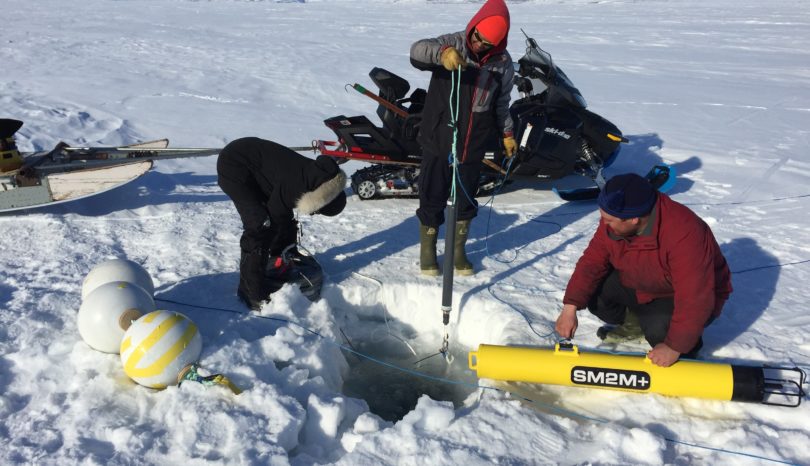Limited economic opportunities and complex social problems have held back the potential of Canada’s Arctic communities. Protecting important marine habitat near the 53 communities that are part of Inuit Nunangat will help build a resilient northern economy that is diverse and self-sufficient.
Marine Protection = Healthy Communities
Inuit derive nearly 50 per cent of their diet from country food, much of which comes from important marine areas they have relied on for generations. These northern waters provide rich habitat for narwhal, bowhead whales, seals, fish and seabirds that are crucial sources of protein for Arctic residents.
To date, the greatest challenge to achieving marine protections in the North is that many conservation projects do not contemplate the roles that community wellness, employment and prosperity play in environmental stewardship. Inuit leader Mary Simon recognized this crucial connection in her final report compiled in 2017 as the Minister’s Special Representative on Arctic Leadership.
In her discussions with Inuit, she found that “there is an expectation that Arctic conservation is tied to building and maintaining strong and healthy communities.” To achieve such a result, other avenues might be needed, such as Indigenous protected areas (IPAs) and Arctic coastal Guardians programs. Simon defined these as “based on the idea of a protected area explicitly designed to accommodate and support an Indigenous vision of a working landscape.”
In endorsing this kind of approach for the Arctic, Oceans North and seven other environmental NGOs advised the Canadian government in a 2016 letter:
- Management of a system of Arctic marine conservation areas should be done by Inuit, directly benefiting Inuit communities through creative jobs and training opportunities. A coastal Guardians program should be explored that could incorporate management, ecological monitoring and vessel management and monitoring.
- Recognizing Inuit guardianship of Canada’s Arctic and these conservation areas as a significant service for the good of Canada (and the world), the government should devise and deliver long-term dedicated funding for their management.
New marine conservation areas in the Arctic will result in management jobs that are uniquely suited to Inuit experts. In addition, these conservations areas will provide ideal platforms for monitoring programs. Such programs can track and evaluate existing ecosystem values and human use of these areas, as well as measure changes brought on by unprecedented warming.
Training programs are essential to ensure that Inuit experts meet qualifications for such jobs. In many cases, these training programs need to be designed and implemented at the same time as the jobs are created to ensure that nearby communities can fully participate. Many of the certifications needed for these conservation jobs are also relevant for jobs in industry, government and communications.
A New Approach to Conservation
Conservation should take root where people live, hunt and travel. Solutions for protecting the marine environment should enhance human and ecological prosperity rather than compromise them.
Nothing is sustainable if it is surrounded by poverty. In order for Canada to significantly increase the number of protected marine areas in the Arctic, it must simultaneously make progress on unemployment, poor education outcomes and a lack of training opportunities.
Oceans North is committed to supporting conservation projects that include training and job creation. In recent years, that has included:
- Helping launch the Inuvialuit Settlement Region — Community-Based Monitoring Program (ISR-CBMP)
- Support for marine planning, coastal monitoring and training in Nunatsiavut
- Support for a marine monitoring pilot project in Nunavut
- Launching community-driven marine mammal and ice monitoring programs in Lancaster Sound
- Promoting the need for a university in the Canadian Arctic

